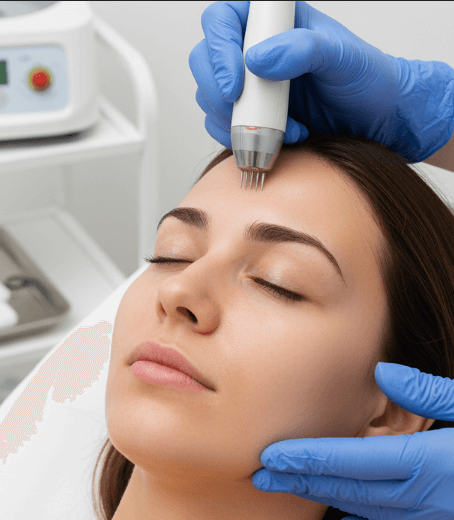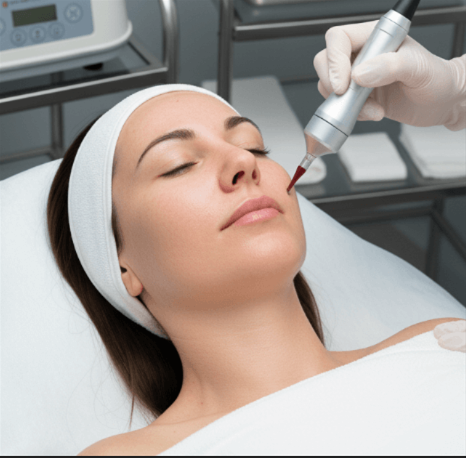Do your eyes always look tired, droopy, or uneven—even when you feel wide awake? Do you have to tilt your head back or raise your eyebrows to see clearly? You might be dealing with ptosis, a condition where the upper eyelid droops over the eye. Fortunately, modern techniques in ptosis correction surgery can not only restore your natural eyelid position but also enhance your appearance and improve your vision.
In South Korea—a global leader in oculoplastic surgery—ptosis correction is a popular choice for both aesthetic enhancement and functional improvement.
What Is Ptosis?
Ptosis (pronounced toe-sis) refers to the drooping of the upper eyelid, which may affect one or both eyes. It can range from a slight sagging to a complete cover of the pupil, interfering with vision. The condition may be:
- Congenital (present from birth)
- Acquired (develops later in life due to aging, nerve damage, or trauma)
Symptoms of Ptosis
- Drooping upper eyelids
- Uneven or asymmetrical eyelids
- A constantly tired or sleepy look
- Difficulty keeping eyes open or seeing clearly
- Headaches or neck strain from lifting eyebrows or tilting head to see
- In children: delayed visual development or amblyopia (lazy eye)
What is Ptosis Correction Surgery?
Ptosis correction surgery aims to lift the drooping eyelid by tightening or shortening the levator muscle or using alternative muscles (like the frontalis) to lift the eyelid.
There are two primary surgical methods:
- Levator Advancement or Resection:
- Ideal for mild to moderate ptosis with good muscle function
- The levator muscle is tightened to elevate the eyelid
- Frontalis Sling Technique:
- Suitable for severe ptosis or poor levator function
- Uses the forehead muscle (frontalis) to help lift the eyelid via a sling
Benefits of Ptosis Correction
- Restores natural eyelid position
- Improves peripheral vision and line of sight
- Creates a more alert, youthful, and balanced appearance
- Corrects functional issues that interfere with daily life
- Enhances eye symmetry for cosmetic harmony
Ptosis Correction in Korea: Why It’s a Top Destination
Korea is globally renowned for its advanced aesthetic and functional eye surgeries. Here’s why medical tourists flock to Seoul for ptosis correction:
✅ World-class oculoplastic surgeons with extensive experience
✅ Precision diagnostics using digital imaging and muscle function tests
✅ Custom-tailored techniques for each patient’s unique anatomy
✅ Natural-looking aesthetic results with hidden incisions
✅ Post-surgical care and recovery support for international patients
What to Expect: Procedure & Recovery
Before Surgery
- Full eye exam and ptosis evaluation
- Photos and measurements of eyelid height and muscle strength
- Treatment plan based on muscle function and desired outcomes
Surgery Day
- Performed under local anesthesia with sedation (or general, if needed)
- Duration: 30–60 minutes
- Tiny incision hidden in the eyelid crease (or above the brow for sling)
Recovery Timeline
- Mild swelling and bruising for 1–2 weeks
- Stitches removed in 5–7 days
- Return to normal activities in about 7–10 days
- Final results visible in 4–6 weeks
Is Ptosis Correction Right for You?
You may be a candidate if:
- You have drooping eyelids affecting your vision or appearance
- You feel your eyes look tired or uneven
- You experience neck pain, brow strain, or vision fatigue
- You want to restore facial balance and look more alert
Both men and women, including children with congenital ptosis, can benefit from this surgery. A consultation with a board-certified oculoplastic surgeon is key to determining your candidacy.
Real Patient Experience
“My right eyelid had drooped since childhood, and I avoided photos. After ptosis correction surgery in Korea, my eyes finally look symmetrical—and I can see clearly without lifting my brows. It’s boosted my confidence so much.”
— Jasmine K., 29, Singapore
Combine Functional & Cosmetic Eye Enhancement
Ptosis correction is often combined with:
- Upper eyelid blepharoplasty (to remove sagging skin)
- Double eyelid surgery (to enhance crease definition)
- Epicanthoplasty (to widen the inner corner for aesthetic balance)
This combination is particularly popular among international patients seeking both visual improvement and cosmetic refinement in a single trip.
Final Thoughts
Ptosis correction surgery is more than just a cosmetic procedure—it can truly change how you see and how the world sees you. Whether you’re seeking to fix a congenital issue, age-related drooping, or asymmetry, Korea offers some of the best outcomes with natural-looking results.




